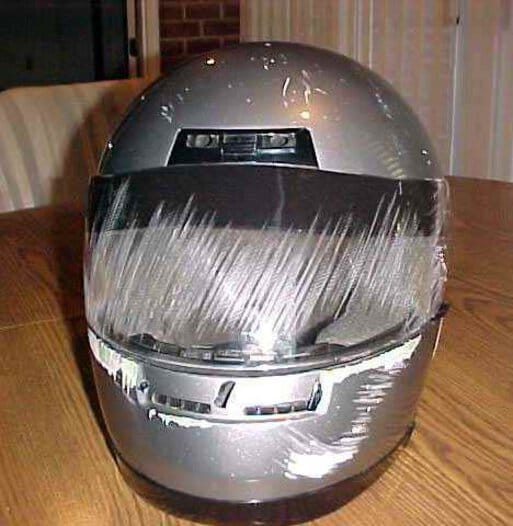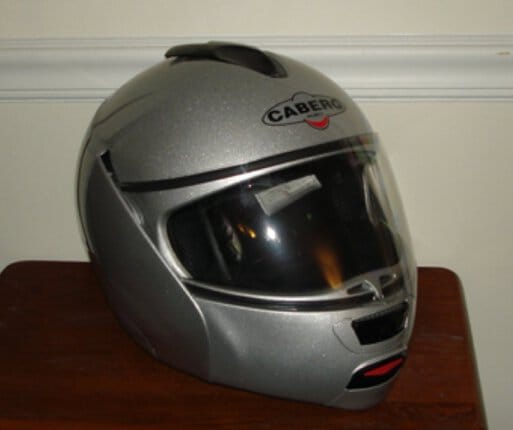Motorcycle Helmets
This one should be easy, right?
Yeah, not so much. The original content below (updating this foreward in October 2020) was wrtten around a decade back, and some standards have since been updated, but much of the issues remain the same - which standard to give the most credence to (it’s not always obvious).
Meanwhile a new results-forcused rating system, SHARP, has surfaced in the UK, which is working in cooperation with the government and publishes some good information alongside ratings and results of specific helmets. The SHARP tests seem reasonable and comprehensive, but do not necessarily align with DOT, Snell, etc. I will call out that as of 2020 - helmets meeting ECE 22.05 or 22.06 may be certified for racing (FIM), while DOT helmets - generally are not even considered.
After all of the research I did back then, as well as taking a look at standard updates (finally!), I remain inclined to stick to my original conclusions, perhaps adjusted slightly - unfortunately, US standards seem to be less research and safety focused to me than the European standards, at least where it applies to motorycyles, so I’d still choose an ECE-rated helmet, and also compare how the helmet or it’s manufacturer generally rates on the SHARP site. Always check for the latest specification that’s available, and regardless of which standard you choose you put your faith in, they generally all improve over time, so don’t buy new leftover gear meeting an older standard whenever possible.
It’s worth noting the ECE standard is about to be revised to the newer (May 2020) ECE 22.06 specification, while Snell has also updated the M2020 specification. DOT remains - manufacturer honor system and not much updated IMO. For an example of why ‘self-certification’ can be a bad idea (like the fox watching the henhouse..), 40% of sampled ‘DOT’ helmets - failed actual testing.
Tracks required a SNELL SA rated helmet for my car to go on track, and I'd looked at it briefly, basically impact protection, full face, plus a fire retardent liner so you in theory don't melt in a rollover fire, I suppose. US Department of Transportation, aka DOT Standard (FMVSS 218), and the UN E.C.E. or Economic Commission for Europe/ECE 22.05 Standard (aka Regulation No. 22). DOT was last updated in 2001, and there are some differences in testing. ECE actually spot tests individual batches of helmets before they're released to consumers, while DOT is basically an honor system, or self-certifying by the manufacturers, and the standard hasn't been revised significantly in some time. A helmet that is ECE 22.05 certified will generally have no problems meeting the DOT standard. Snell, on the other hand, seems to encourage a stiffer outer shell in order to pass their own tests.
Stiffer should be good, right? Well, not necessarily - there are more than a few people, scientists included, that believe that the softer shells of ABS/plastic (typical construction for DOT and ECE helmets), disperses the impact energy better, resulting in lower G forces being transmitted to your head. Read the article and tests linked to, and come to your own conclusions, but me? I'll stick to helmets that are preferably both DOT and ECE certified, and not Snell, until more investigation is done.

OK, that decision out of the way, now what? Honestly, helmets still aren't impressive. Like many other things, you'd expect technology to have come forward enough over the past 30+ years to make a significantly better helmet. Oh, they're better, but only incrementally, and still use ECE (basically styrofoam) as the main component to absorb force
Head Shapes
There's also the matter of 'head shape.' Some manufacturers (Arai) acknowledge this, and even tell you what each helmet's shape is - egg, oval, round/earth, etc. Each manufacturer, similar to shoes, also has a different interpretation of sizing. One helmet may fit you perfectly in a size Large, but you may need a Medium in another manufacturer’s helmets. The single best thing you can do is try on several manufacturers helmets, in person, and find which manufactures helmets (and models in some cases), fit you best! And please, don't buy used helmets unless you are very sure of their history; helmet damage is NOT always visible!
You can pick between half helmets (think Harley AKA Hardley riders), 3/4 helmets, full face, and 'modular' or 'flip up' helmets. Many believe the flip-ups offer the same level of protection as a full-face, but earlier on there was no specific testing done on them - all tests are done against the top 'main' part of a helmet. Furthermore, many of the cheap, and some not so cheap flip-ups, use plastic latching mechanisms, and as there's no standard regarding chinbar construction on the flip-ups, there's no 'guarantee' of safety there, either. (ETA 2020 - at least SHARP does include specific testing around modular helmets - so IMO, it’s worth at least considering their ratings, or for a given manufacturer).
Be sure to fit your helmet properly - find one fitting your head's shape, and that fits snugly, but without causing 'hot spots' or migraines. Wear it around the store for 30 minutes if able to. If someone grabs your helmet and turns it, the helmet shouldn't move very far before your face and head is forced to move with the helmet, and with the chin strap done up, you should not be able to roll the helmet off your head from the front or rear.
Finding a decent modular (flip-up) helmet
I do own both a modular/flip-up and regular full face currently. Unfortunately, when I bought my last modular, there weren't many quality flip-ups I could find. HJC made one, with plastic latches..no thanks. I looked at every one I could find, and finally the best one I could find was a Caberg Justissimo, which I paid entirely too much for at a BMW dealer…
It's been a decent helmet, overall. It's worn in and fits slightly looser, and is slightly noiser than I'd like, and doesn't vent terribly well, but it's all relative - and most helmets don’t vent all that well in 90*+ temps, no matter their claims.
Again, I don't think 'state of the art' in helmets is quite where it should be by now..but, it gets rid of the D-straps and replaces it with a quick release, which I love (have added to other helmets), and has an internal visor that's great, and only now are other vendors starting to copy them, usually in an inferior way, like the Nolan, with it's cheesy external sun visor that's flat on the bottom and scratches the visor, versus the Caberg's which can be dropped right down your nose, and has a cutout for it like a pair of sunglasses.

Before someone takes this the wrong way, I think the current gen Nolans are pretty good helmets. Were I not so spoiled by the internal sun visor on the Caberg, I might pick one up (but throw out their sun visor). Other helmets I've gone shopping for for myself or others, and came back with mixed impressions. I know there are a lot of them out there, but sorry, HJCs simply looked to be cheaply built compared to nearly every other helmet on the rack. Scorpion is a relatively new company building helmets, and they're priced on the low side, but are pretty impressive bang for the buck, and have one of the best (read as working) anti-fog visors coming on a helmet out of the box. No flip-up from them back in 2010, but I do own an EXO-400 myself, and would consider buying a modular from them if they released one. The venting system on the EXO-400 is a bit odd, as it has multiple 'switches,' and they slide left and right, so it's never really entirely quick nor easy to figure out which way is further open or closed, but it is indeed seemingly a solid helmet, and you get used to the venting (which is better than the Caberg once figured out).
ETA 2021: The good news (to me, at least) is current Caberg models still are rated highly, and while still a ‘niche’ or difficult to get brand in the US - they can be had in the US with a bit of persistence. I expect I’ll replace my now aging Caberg…with another Caberg. I’d also take a look at updated Nolans and the Scorpion options along with actual test ratings on each.
Links and further reading
-
SHARP site with helmet results (UK organization)
-
Helmet fitting article (motorcyclemaniac.com)